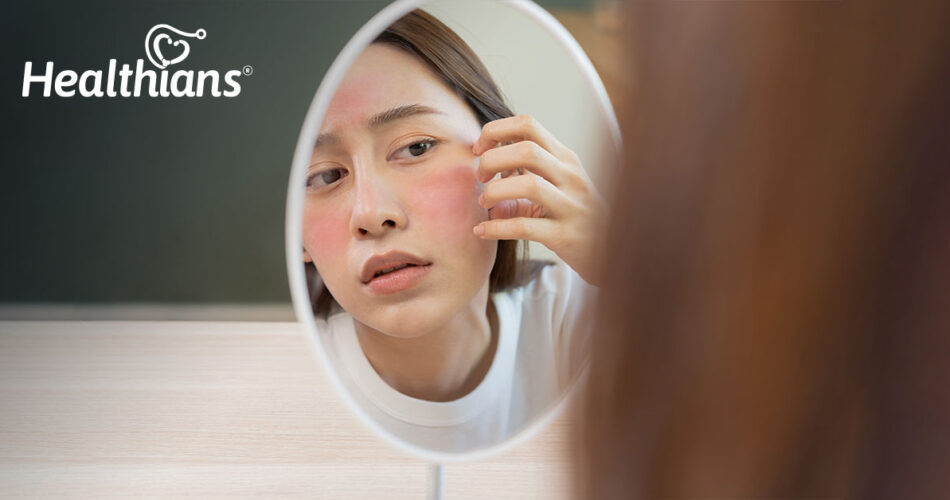Introduction
Ashy skin, also known by the scientific terms asteatosis and xerosis, refers to extremely dry skin that flakes because it can’t retain moisture. The phrase is frequently used to describe patches of white or grey skin on your face, arms, or legs that often look like ashes. The condition is often accompanied by dry, flaky skin that is rough to the touch.
The term ‘ashy skin’ originated in the African American community. While this skin condition affects all complexions, people with darker skin tones are more prone to it.
While ashy skin may not be harmful, it can be annoying and cause uncomfortable itching, cracking, or burning.
In this blog, we will discuss some of the common causes of ashy skin and ways to prevent it.
Common Symptoms
Ashy skin is characterized by a dull, grayish appearance, often accompanied by dryness and flakiness. Signs and symptoms of ashy skin might vary based on your age, skin tone, environment, health status, and sun exposure. The following are some common symptoms of ashy skin:
- Lifeless appearance: Skin appears chalky white, or ashy grey in color
- Dryness: The skin may feel dry and rough.
- Bumpy Texture: It may be accompanied by a bumpy, rough surface texture.
- Itching: There may be slight to severe itching or discomfort, especially in areas that are particularly dry or flaky.
- Fine lines: Dryness can lead to the development of thin, wrinkled lines, especially on the knees or elbows.
- Cracked look: The skin may have a “dry riverbed” look, which can be more noticeable in the legs.
- Redness: In some cases, ashy skin can be accompanied by round, scaly, itchy, red patches scattered over the legs.
Causes
· Accumulation of dead skin cells on the skin’s outermost layer.
· A lack of exfoliation
· Using of wrong skin-care products
· Seasonal variations in weather
· Genetic predisposition
· Prolonged water exposure
· Certain medical conditions like eczema
Treatments
· Moisturize
Ashy skin requires deep hydration and what better than moisturizers to do the trick? Moisturizing is one of the easiest and most effective treatments for ashy skin, especially after a bath or shower and before going outside in hot, dry, or cold weather. Moisturizing the skin can help in interrupting dry skin cycle and also in supplying the skin with essential nutrients for optimum skin health. There are many different types of moisturizers in the market, but you should opt for lotions and creams containing emollients.
· Exfoliate
Dead skin cells can be removed through exfoliation, revealing healthier, more beautiful skin. Alpha Hydroxy Acids (AHAs) and Beta Hydroxy Acids (BHAs) are examples of chemical exfoliants that can be used to accomplish this. But, it’s crucial to avoid over-exfoliating as this can irritate the skin and harm it.
· Use a gentle cleanser
Studies have demonstrated that using gentle cleansers as part of a daily skin care routine reduces ashy skin. Dermatologists recommend using gentle, fragrance-free skin topicals and cleansers to remove dirt, oil, and makeup from the skin.
· Avoid hot showers or baths
Bathing in superhot showers can deplete the natural oils from the skin’s surface, leading to dryness and flakiness. Most dermatologists recommend limiting your time in the shower or bath for no more than 15 minutes to prevent skin from becoming dry and ashy. Try to avoid using hot water when showering or bathing, and use lukewarm water.
· Wear sunscreen
Sun exposure can cause skin dryness and damage, resulting in ashy skin. Wear a broad-spectrum sunscreen with an SPF of at least 30 to protect your skin from the sun’s harmful rays. Apply it to all areas of exposed skin, including the face, neck, and hands.
· Drink plenty of water
Staying hydrated is essential for having healthy, hydrated skin. Drinking plenty of water can help keep the skin moisturized from within. Aim for eight glasses of water per day, or more if you are physically active or live in a hot climate.
· Use a humidifier
Low humidity can cause skin dryness and flakiness. A humidifier can help restore moisture in the air, which can help to hydrate the skin. This is especially important during the winter, when indoor heating can cause the air to dry out.
Final Thoughts
Ashy skin is a fairly common condition that can be treated with gentle creams, using sensitive soaps, and making other lifestyle changes.
If you believe that your ashy skin is not improving with at-home remedies, consult a skin care professional to determine the underlying cause and treatment for the condition.




